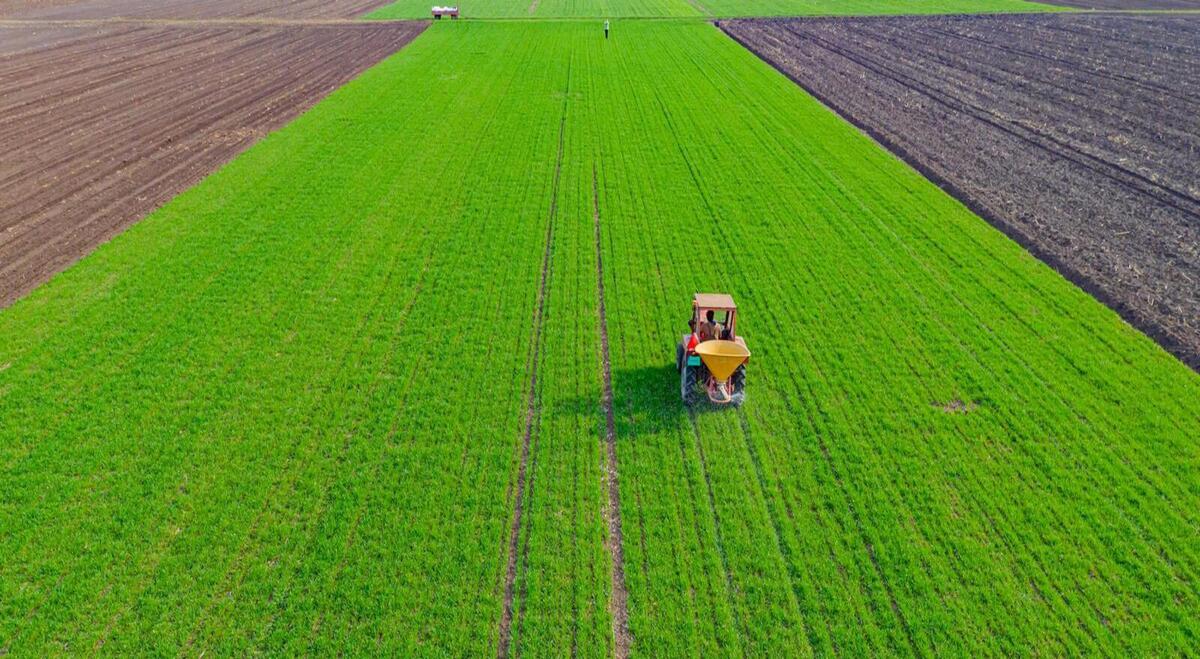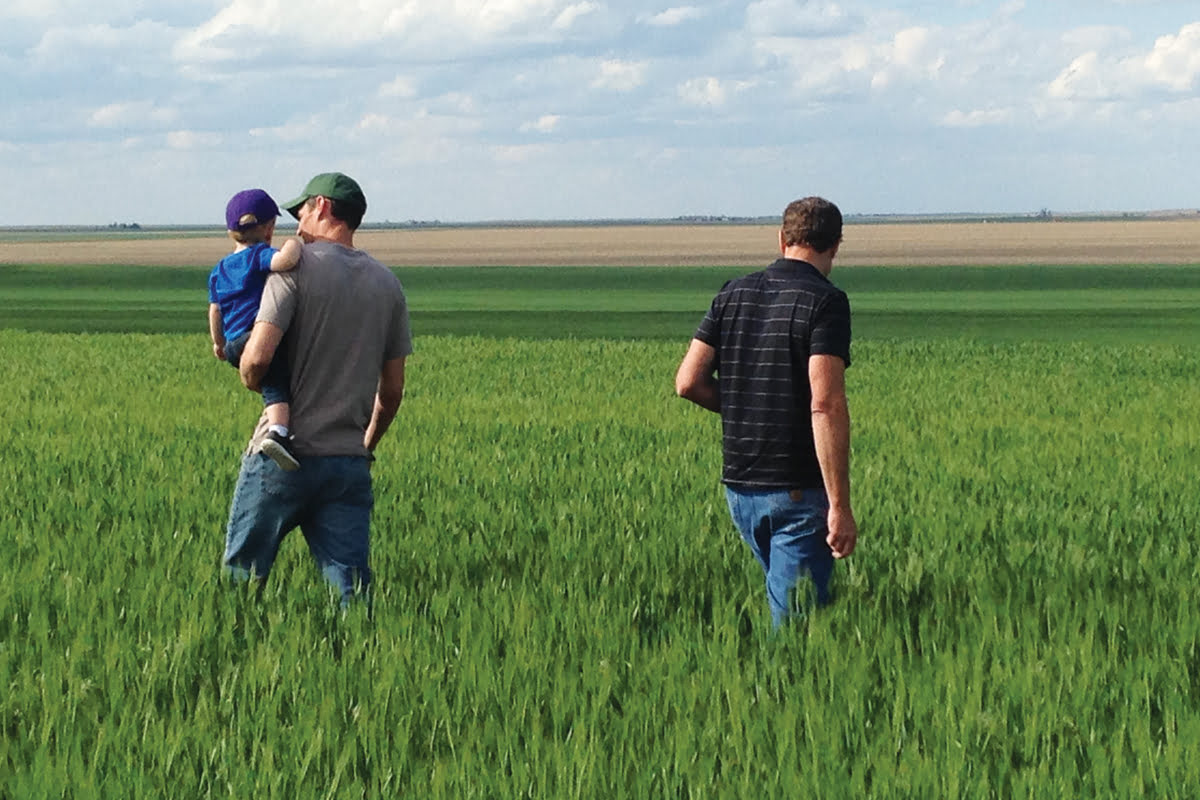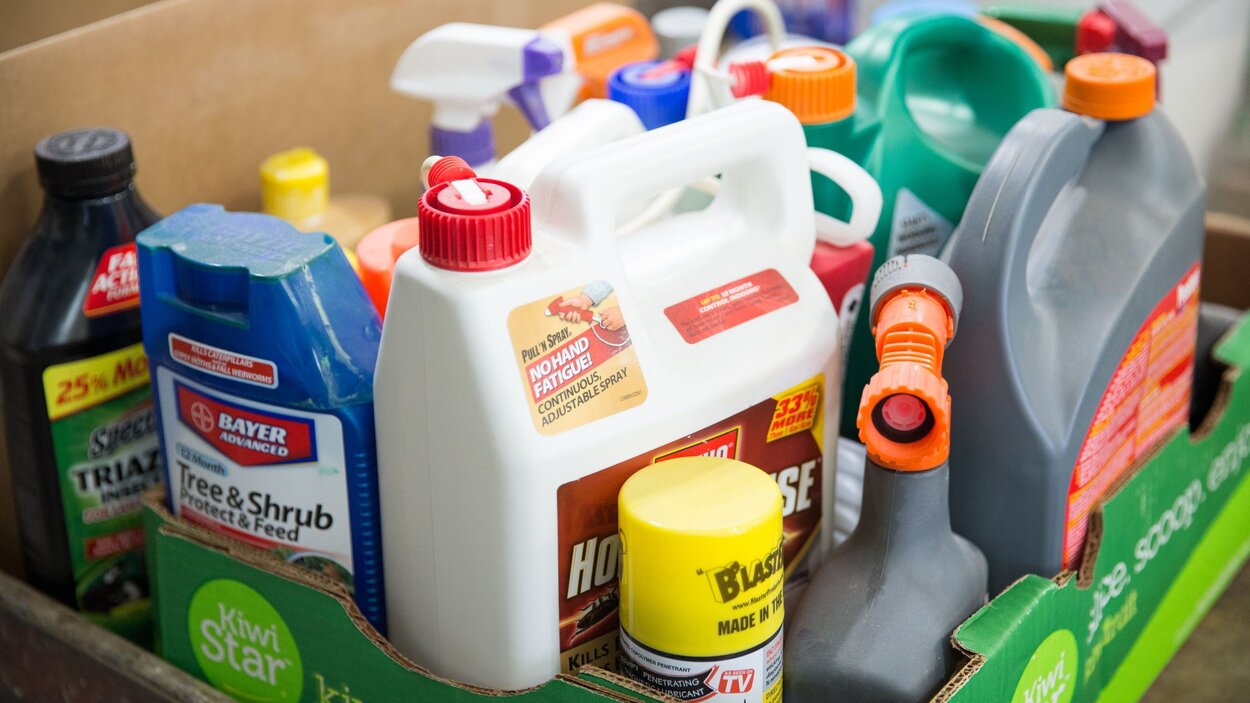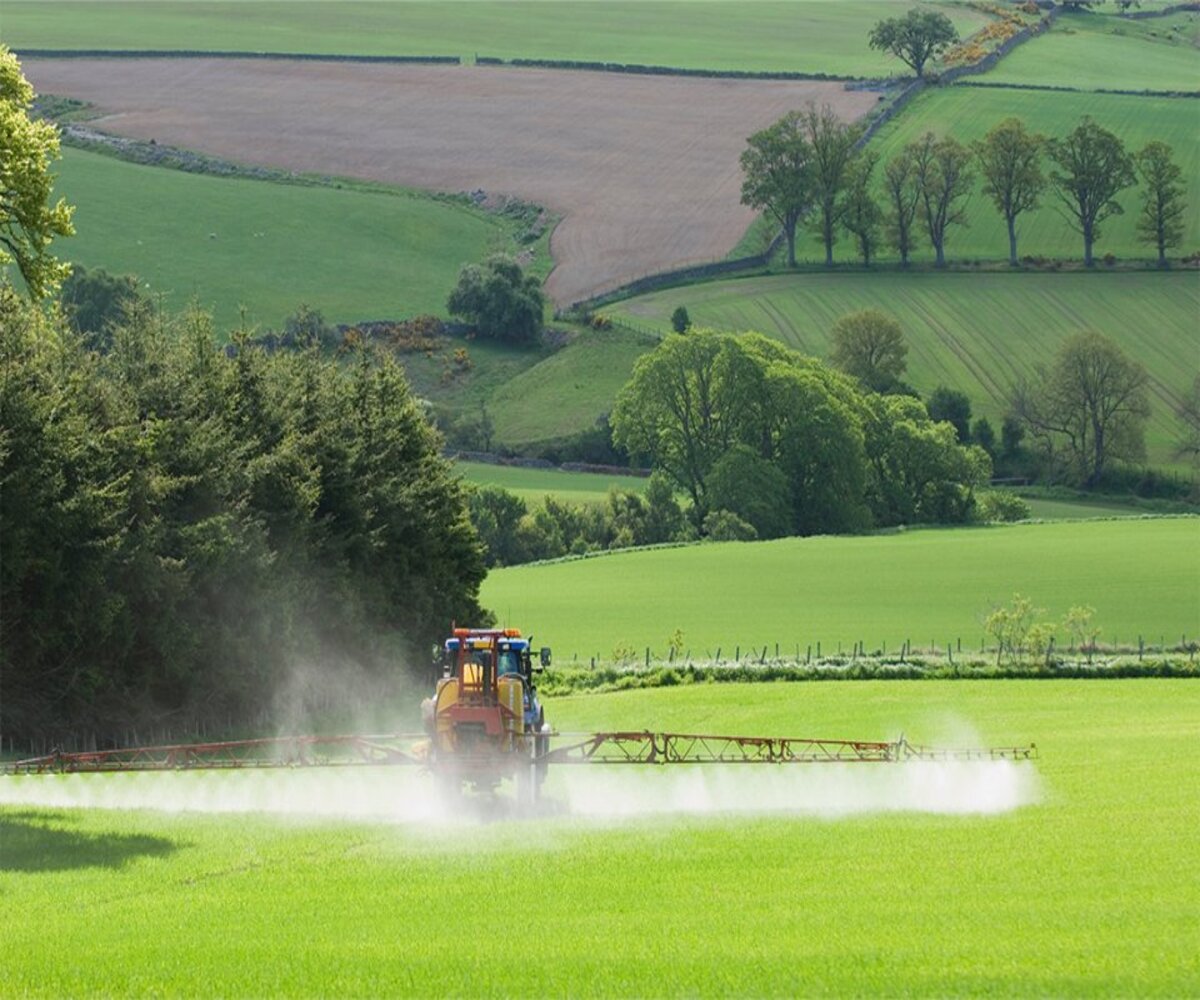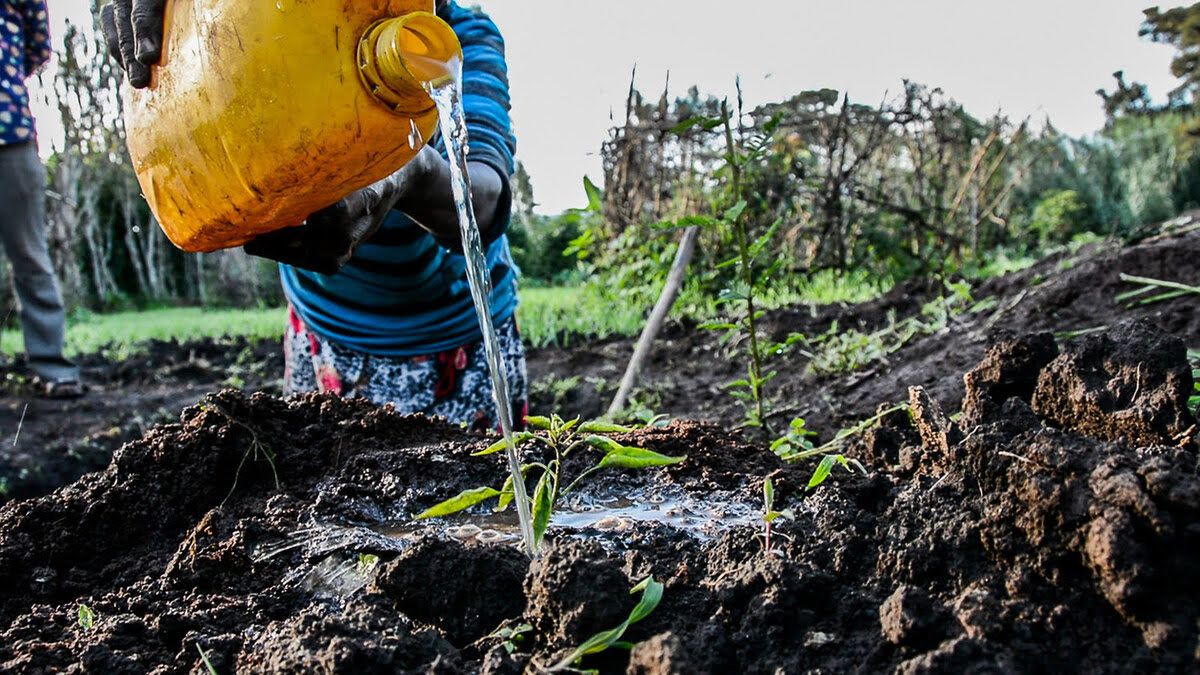Home>Gardening News and Trends>Latest News>How Much Pesticides Are Used Each Year


Latest News
How Much Pesticides Are Used Each Year
Published: November 26, 2023
Discover the latest news on pesticide usage - find out how much pesticides are used each year and stay informed.
(Many of the links in this article redirect to a specific reviewed product. Your purchase of these products through affiliate links helps to generate commission for Chicagolandgardening.com, at no extra cost. Learn more)
Table of Contents
Introduction
Pesticides play a crucial role in modern society, helping to protect crops from pests and diseases and ensuring food security for a growing global population. These chemical substances are used to control or eliminate pests that can cause significant damage to agricultural crops, as well as in non-agricultural settings such as homes, gardens, public spaces, and industries.
The use of pesticides has significantly increased over the past century, driven by the need to maximize crop yields and combat the spread of diseases carried by pests. However, this increased reliance on pesticides has raised concerns about their potential impacts on human health and the environment.
This article aims to explore the extent of pesticide use globally, highlighting the factors influencing their usage in agricultural and non-agricultural settings. Additionally, it will discuss the environmental and health concerns associated with pesticide use and the measures in place to regulate and monitor their usage.
By understanding the dynamics of pesticide usage, we can promote sustainable practices that minimize the negative impacts while still ensuring effective pest control. It is essential to strike a balance between protecting crops and safeguarding human health and the environment, and through informed decision-making, we can achieve this delicate equilibrium.
The Importance of Pesticides
Pesticides play a vital role in our modern agricultural systems, helping to protect crops from pests and ensuring a stable food supply. In the absence of effective pest control measures, crops can suffer significant losses due to pests such as insects, weeds, and diseases.
One of the primary benefits of pesticides is their ability to increase agricultural productivity. By controlling pests, pesticides minimize crop damage and enable farmers to produce higher yields. This is particularly important in regions with high pest pressure or vulnerable crops, where without adequate pest control, food production would be severely compromised.
Pesticides also contribute to food security by protecting crops during storage and transportation. They prevent post-harvest losses due to insect infestations or fungal growth, ensuring that food reaches consumers in safe and edible condition. This is crucial for maintaining a stable food supply chain and reducing food waste.
Furthermore, pesticides help reduce the spread of vector-borne diseases. Insecticides, for example, can be used to control disease-carrying mosquitoes, ticks, and flies, which transmit infectious diseases such as malaria, dengue fever, and Lyme disease. By controlling the vector population, the risk of disease transmission can be significantly reduced, thereby protecting public health.
It is important to note that pesticides are not only used in agricultural settings but also in non-agricultural environments. For instance, pesticides are utilized in public spaces like parks and golf courses to maintain aesthetically pleasing landscapes by controlling weeds and pests. Additionally, pesticides are often employed in residential settings to manage household pests, ensuring a hygienic and comfortable living environment.
In summary, the importance of pesticides cannot be overstated. They are essential tools for agriculture, enabling farmers to produce abundant crops, ensuring food security, and protecting public health. However, it is crucial to use pesticides responsibly and adopt sustainable pest management practices to mitigate any potential negative impacts on the environment and human health.
Factors Influencing Pesticide Use
Several factors influence the use of pesticides in both agricultural and non-agricultural settings. Understanding these factors is essential for developing effective and sustainable pest control strategies. Here are some key factors that influence pesticide use:
- Pest Pressure: The severity and type of pests present in a given area play a significant role in pesticide usage. High pest pressure may necessitate more frequent and intensive pesticide application to mitigate crop damage or pest infestations.
- Crop Type: Different crops have varying susceptibilities to pests. Pesticide use is often tailored to the specific pests that commonly affect a particular crop. For example, insecticides are frequently used to protect fruits and vegetables from insects, while herbicides are commonly applied to control weeds in field crops such as corn and soybeans.
- Regulatory Frameworks: Regulatory frameworks and guidelines determine the approved pesticides for use, specific application rates, and safety measures. These regulations aim to ensure that pesticides are used responsibly and with minimal impact on human health and the environment.
- Availability and Accessibility: The availability and accessibility of pesticides play a crucial role in their usage. Farmers and pest control professionals need access to a variety of effective pesticides to address specific pest problems. Limited availability or difficulty in accessing suitable pesticides can impact the effectiveness of pest management efforts.
- Knowledge and Education: Proper knowledge and education about pesticide use are fundamental in promoting responsible and effective application. Farmers and other pesticide users need to be aware of proper handling, application techniques, and safety precautions to prevent adverse effects on human health, non-target organisms, and the environment.
- Pesticide Resistance: Pesticide resistance occurs when pests develop tolerance to certain pesticides over time, rendering them less effective. This phenomenon necessitates the use of alternative pest management strategies, such as rotating or combining different classes of pesticides or deploying biological control methods, to combat resistant pests.
These factors interact in complex ways, influencing pesticide use patterns around the world. Balancing the need for effective pest control with the potential risks associated with pesticide use requires continuous monitoring, research, and the adoption of integrated pest management approaches that minimize reliance on pesticides.
Agricultural Pesticide Usage
Agricultural pesticide usage is widespread and plays a crucial role in protecting crops from pests and diseases. Pesticides are applied to agricultural fields to control a wide range of pests, including insects, weeds, and plant diseases. Here are some key aspects of agricultural pesticide usage:
- Insecticides: Insecticides are commonly used in agriculture to control insects that can damage crops, such as beetles, aphids, and caterpillars. These pesticides can be applied through various methods, including foliar spray, seed treatment, or soil application, depending on the target pest and crop type.
- Herbicides: Herbicides are extensively utilized for weed control in agricultural fields. Weeds compete with crops for resources like water, nutrients, and sunlight, thereby reducing crop yields. Herbicides are applied to eliminate or suppress weeds, allowing crops to grow without competition for resources.
- Fungicides: Fungicides are used to protect crops from fungal diseases that can cause significant damage and yield losses. These diseases can affect various parts of the plant, such as the leaves, stems, and fruits. Fungicides are applied preventively or curatively, depending on the specific disease and its lifecycle.
- Plant Growth Regulators: Plant growth regulators are chemicals that influence the growth and development of crops. These substances can stimulate plant growth, regulate flowering and fruiting, or control undesirable plant characteristics. Plant growth regulators are used to improve crop yield, uniformity, and quality.
- Seed Treatments: Seed treatments involve coating seeds with pesticides to protect them from pests and diseases during germination and early growth stages. This provides immediate protection to young plants and helps establish healthy crops from the start.
- Integrated Pest Management (IPM): Integrated Pest Management is an approach that combines multiple pest control strategies to minimize the reliance on pesticides. IPM focuses on preventive measures, biological control, cultural practices, and the careful use of pesticides, taking into account the specific pest and crop characteristics.
It is important to use agricultural pesticides judiciously and responsibly. Appropriate application methods, timing, and dosage must be followed to minimize the environmental impact and reduce the potential risks associated with pesticide use. Regular monitoring, pest scouting, and accurate pest identification are crucial for effective pest management and optimizing pesticide use in agriculture.
Pesticide Usage in Non-Agricultural Settings
Pesticides are not limited to agricultural use; they are also widely utilized in non-agricultural settings for various purposes. From public spaces to residential areas, the use of pesticides helps control pests and maintain a healthy environment. Here are some key examples of pesticide usage in non-agricultural settings:
- Public Spaces: Pesticides are commonly used in parks, recreational areas, golf courses, and other public spaces to control weeds, insects, and rodents. These areas require pest management to ensure the safety, cleanliness, and aesthetic appeal of the environment for the enjoyment and well-being of the public.
- Residential Areas: In residential settings, pesticides are used to manage household pests such as ants, cockroaches, termites, mosquitoes, and rodents. Proper pest control helps maintain a sanitary and comfortable living environment, preventing nuisances and reducing the risk of disease transmission.
- Industrial and Commercial Facilities: Pesticides find applications in industrial and commercial settings to control pests that can cause damage to structures, equipment, and stored products. These facilities may include warehouses, manufacturing plants, food processing facilities, and retail stores.
- Hospitals and Healthcare Facilities: Pesticides are used in healthcare facilities to control pests that can pose health risks to patients, staff, and visitors. It is crucial to maintain a sanitary environment to prevent the spread of infectious diseases and ensure a safe healthcare setting.
- Schools and Educational Institutions: Pest control is essential in schools and educational institutions to create a conducive learning environment. Pesticides may be used to control pests like ants, cockroaches, and rodents, minimizing disturbances and health risks for students and staff.
- Transportation and Infrastructure: Pesticides are employed to control vegetation along transportation routes, including roadsides, railways, and airport runways. This helps maintain clear visibility, prevent vegetation encroachment on infrastructure, and reduce the risk of accidents and damage.
While the use of pesticides in non-agricultural settings is necessary for pest management, it is important to exercise caution and adhere to safety guidelines. Proper training, knowledge of pesticide labels, and compliance with regulations are essential to minimize risks to human health and the environment. Integrated pest management practices, which focus on prevention, monitoring, and targeted pesticide use, can help reduce overall pesticide usage while effectively managing pests in non-agricultural settings.
Environmental and Health Concerns
The use of pesticides, while beneficial for pest control, raises significant concerns regarding their potential impacts on the environment and human health. Here are some of the key environmental and health concerns associated with pesticide usage:
- Impact on Non-Target Organisms: Pesticides can harm non-target organisms such as beneficial insects, birds, mammals, and aquatic life. The indiscriminate use of pesticides can disrupt ecosystems, leading to the loss of biodiversity and ecological imbalances.
- Water Contamination: Pesticides can enter water bodies through runoff, leaching, and spray drift. This contamination poses risks to aquatic life and can contaminate drinking water sources. Pesticide residues in water bodies can have long-term effects on ecosystem health and disrupt the balance of aquatic ecosystems.
- Resistance Development: Over time, pests can develop resistance to pesticides. This resistance can render pesticides less effective, leading to increased pesticide usage and the potential for the emergence of more resistant pest populations. This cycle of resistance development can pose challenges for pest management strategies and undermine their long-term effectiveness.
- Exposure and Health Risks: Pesticide exposure can pose risks to both applicators and individuals who come into contact with treated areas. Acute poisoning, occupational health risks, and chronic health effects have been associated with pesticide exposure. Certain pesticides have been linked to various health issues, including developmental disorders, cancer, hormone disruption, and neurological problems.
- Environmental Persistence: Some pesticides are persistent in the environment, meaning they do not readily break down and can persist in the soil, water, and air for extended periods. This persistence increases the potential for accumulation and long-term exposure to both target and non-target organisms, further exacerbating environmental and health risks.
- Drift and Off-Target Movement: Pesticide drift occurs when sprayed particles are carried by wind currents to unintended areas, potentially affecting neighboring crops, residential areas, or natural habitats. This drift can result in unintended exposure and damage to non-target plants and organisms.
Addressing these concerns requires a multifaceted approach that emphasizes the use of integrated pest management strategies, which minimize reliance on pesticides. Implementing sustainable agricultural practices, such as crop rotation, biological control methods, and precision application technologies, can help reduce pesticide usage and mitigate potential environmental and health risks.
Regular monitoring, research, and advancements in technology are crucial for developing safer and more effective pest management alternatives. Additionally, stringent regulation, proper labeling, and education for pesticide users are essential in promoting responsible pesticide use and minimizing adverse impacts on the environment and human health.
Regulation and Monitoring of Pesticide Use
To ensure the safe and responsible use of pesticides, regulatory frameworks and monitoring systems have been established at both national and international levels. These regulations aim to safeguard human health, protect the environment, and ensure the effectiveness of pest control measures. Here are some key aspects of pesticide regulation and monitoring:
- Pesticide Registration: Before a pesticide can be sold or used, it must undergo a rigorous registration process. Regulatory agencies assess the efficacy, safety, and environmental impact of the pesticide, considering factors such as toxicity, persistence, and potential ecological effects. Only approved pesticides are granted registration for specific uses.
- Labeling and Safety Measures: Pesticide labels provide vital information about the proper and safe use of the product. This includes instructions for application, recommended protective equipment, dosage rates, and precautions to minimize risks. Users are obligated to adhere to label instructions to protect their own health and the environment.
- Restricted Use and Special Licensing: Certain pesticides classified as highly toxic, persistent, or posing significant risks require special licensing or certification for their use. This restricts access to trained professionals who have the necessary knowledge and expertise to handle and apply these pesticides safely and effectively.
- Residue Limits: Regulatory agencies establish and enforce maximum residue limits (MRLs) for pesticides in food and feed commodities. MRLs ensure that the concentration of pesticide residues on harvested crops, animal products, and processed foods remains below a specific threshold that is safe for human consumption.
- Monitoring and Enforcement: Regulatory agencies actively monitor pesticide use, analyzing residue levels in food samples, environmental samples, and water bodies. Compliance checks, inspections, and audits are conducted to ensure that pesticide users adhere to regulations and employ best management practices. Non-compliance can lead to penalties and sanctions.
- International Harmonization: International organizations such as the Food and Agriculture Organization (FAO) and the World Health Organization (WHO) collaborate to establish international standards and guidelines for pesticide regulation. These harmonization efforts aim to ensure consistent standards and facilitate trade while protecting human health and the environment.
Regulation and monitoring of pesticide use are continuously evolving processes. Scientific advancements, research findings, and emerging concerns contribute to the refinement and updating of pesticide regulations. The collaboration between regulators, scientists, industry stakeholders, and consumers is crucial in maintaining a balance between effective pest control and minimizing risks to human health and the environment.
Conclusion
Pesticides play a critical role in modern society, enabling us to protect crops from pests and diseases, ensuring food security, and maintaining healthy environments. However, the use of pesticides raises important concerns regarding their potential impacts on the environment and human health.
It is imperative to balance the need for effective pest control with the protection of our ecosystems and well-being. Integrated pest management (IPM) practices that combine various pest control strategies, minimize reliance on pesticides, and prioritize prevention and monitoring are key to achieving this balance.
Regulatory frameworks, pesticide registration processes, and monitoring systems are in place to ensure responsible pesticide usage. These measures help safeguard human health, protect non-target organisms, and maintain the integrity of our ecosystems. Ongoing research and advancements in technology are necessary to develop safer and more sustainable pest management alternatives.
Education and awareness about proper pesticide use, adherence to label instructions, and the promotion of integrated pest management practices are crucial for all stakeholders involved. By adopting responsible pesticide use and sustainable agricultural practices, we can reduce environmental impacts, mitigate health risks, and promote long-term sustainability.
In conclusion, while pesticides are valuable tools for pest control, their usage must be approached with caution and a commitment to ecological and human health. By striking a balance between effective pest management and minimizing environmental and health risks, we can ensure a sustainable future for agriculture, public spaces, and the well-being of our communities.


